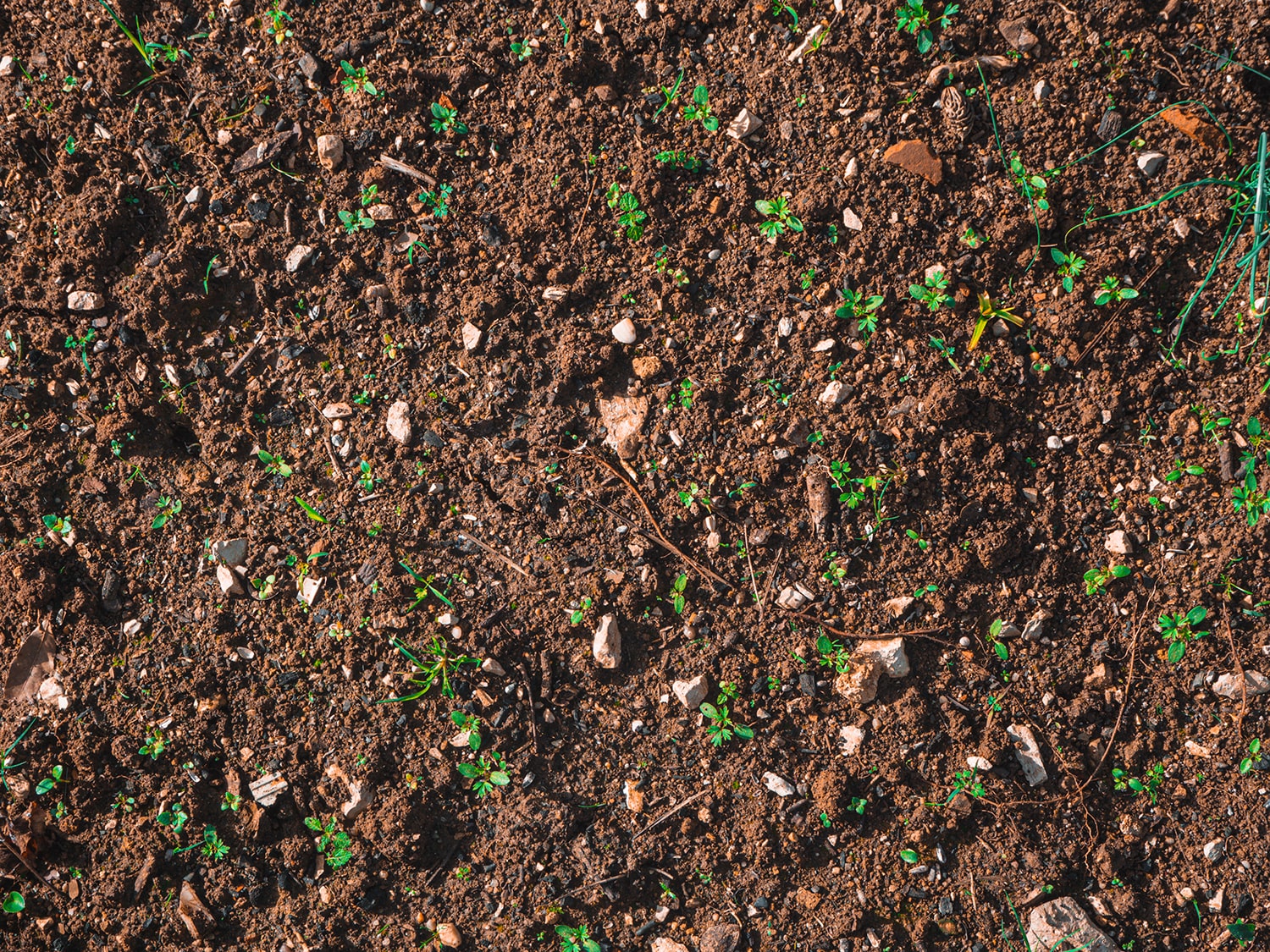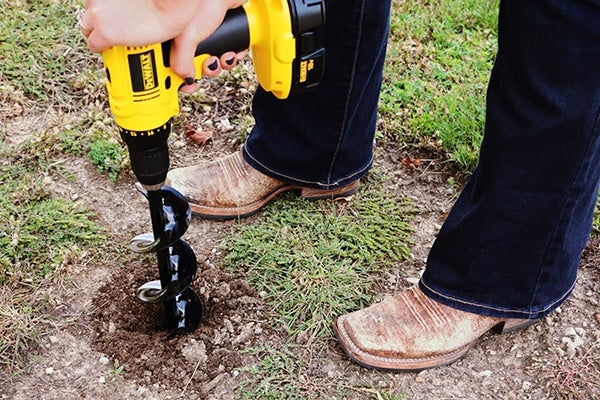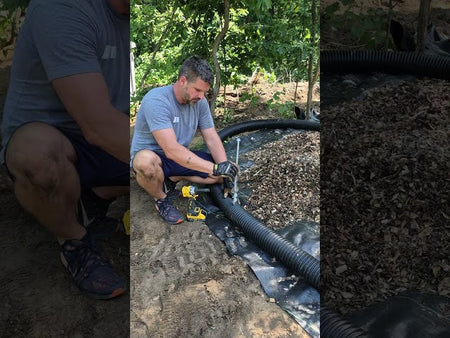Digging Through Clay Soil & Tree Roots
Manually digging through tough clay soil and tree roots with a shovel is a strenuous, lengthy activity. That’s why many gardeners are, and should be, turning to garden augers to speed up the process and avoid over-exertion and back strain. Using a heavy-duty auger bit turns your drill into a powerful digging tool, perfect for smoothly cutting through rough ground and roots.
Follow our guide, using the videos as a reference, to learn how to dig in clay soil and through tree roots, and how to do that safely.
How to Dig in Clay Soil
As shown in the video above, the Power Planter 7” x 28” Gallon Pot and Post Hole Auger digs through Virginia red clay and tree roots like butter. Clay-heavy soil is notoriously dense and sticky, which is why many people struggle with traditional digging tools. An auger drill bit for clay soil provides steady power and torque, breaking up the ground so you can plant, set posts, or create holes without exhausting yourself.
Steps for digging in clay soil with an auger:
-
Attach the auger: Secure a heavy-duty clay auger bit into your drill’s chuck, making sure it’s tightened properly.
-
Mark your spot: Decide on where you need the hole and press the tip of the auger into the ground to set your starting spot.
-
Start drilling slowly: Begin at a low speed to let the auger bite into the clay without slipping.
-
Apply steady pressure: Let the auger drill bit for clay soil do the work, pressing down gradually as the bit pulls itself deeper.
-
Clear debris: Lift the auger out occasionally to release clay buildup.
-
Repeat as needed: For deeper holes, continue drilling in stages, pulling the auger out to clear soil before moving further down.
Choosing the best auger for clay soil will make all the difference when you’re regularly working in these conditions. A longer, heavy-duty auger will not only penetrate the compacted ground but will clear it efficiently, leaving you with clean holes ready for planting or landscaping projects.
How to Dig Through Tree Roots
Tree roots can be a major obstacle when working on projects in your yard. Instead of hacking away with a shovel or axe, consider using a tree root auger. As seen in the video, a large Power Planter auger cuts through small to medium roots while drilling, keeping your progress steady without the added exhaustion of manual labor.
Steps for digging through tree roots with an auger:
-
Choose the right auger for the job: Select a durable auger for tree roots that’s long and sturdy enough to handle resistance.
-
Locate your spot: Mark where you need the hole, ideally away from very large roots that could damage your drill.
-
Drill steadily: Position the auger vertically and drill at a moderate speed to let the bit chew through the roots gradually.
-
Stop and clear: When you hit thicker roots, back the auger out slowly to avoid binding, then reapply pressure.
-
Work in stages: For stubborn roots, drill a little at a time, letting the auger chip away instead of forcing it.
-
Inspect your hole: Once through, check for proper width and depth, and clear out any leftover root bits or soil before planting or installing pots.
Safety Tips When Using Auger Drill Bits
In this second video, Brian from Power Planter gives a great demonstration of why drill safety matters when working with augers, especially in tough soil conditions. He starts by noting that Power Planter heavy-duty augers are built to handle difficult conditions, stating that they are “Made in the USA, great quality steel, you can go for broke digging stony ground and everything. This thing will not break, and if it does break, we’re gonna replace it anyway.”
However, no matter how durable the auger is, your drill setup and technique are what keep you safe. Brian goes on to explain that you should always use an 18V cordless drill with a clutch, never a 240V corded drill. Corded drills often spin too fast, and without a clutch, they can torque suddenly if the auger jams, putting your wrist at risk.
He demonstrates how a clutch works in real time: when the auger hits an obstacle, the clutch releases and prevents the drill from twisting violently. He also shows how to adjust the drill’s clutch settings. The lowest clutch setting is not very effective as it disengages the motor too easily. Higher speed settings, however, give the drill enough power to dig effectively while still allowing the clutch to disengage if the auger hits a rock or a root. The combination of control and safety is key to working in tough soil.
Steps for safe auger drilling in hard ground:
-
Use the right drill: Choose an 18V cordless drill with a clutch, and avoid 240V corded drills.
-
Set your speed correctly: Skip the lower clutch settings. Use higher speeds for effective digging, going up in speed gradually to test what works best.
-
Maintain control: Hold the drill with both hands and keep a balanced footing.
-
- Tip: Use a drill with a stability handle for better control.
-
Rely on the clutch: When the auger jams, let the clutch disengage the motor and pull out of the hole instead of forcing the drill further.
When paired with the right clay auger bit or tree root auger, a quality drill with safety features makes the whole digging process easier, safer, and more efficient. Whether you’re planting in tough clay or working through root-filled soil, the right auger setup helps you get the job done quickly and comfortably.
Tackle Clay Soil and Roots with Ease
If you’ve ever tried to dig into heavy clay soil or slice through stubborn tree roots with a shovel, you know how frustrating and exhausting it can be. That’s why so many gardeners are turning to augers. A clay auger bit or tree root auger can take what feels like an impossible task and turn it into something achievable and quick.
And the best part? Augers aren’t just for professionals. They’re used by gardeners of all ages and abilities to create beautiful landscapes and thriving gardens, even in places where clay and roots dominate the soil. With an auger in hand, tough terrain becomes an opportunity, not an obstacle.






